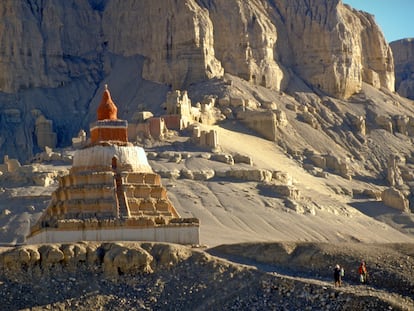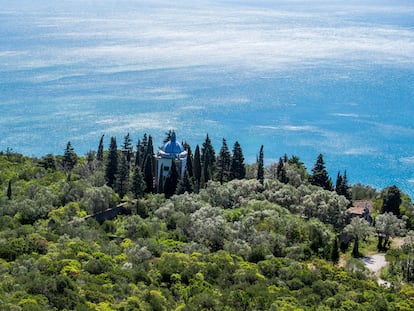From Princess Diana to Rod Stewart: Copacabana Palace celebrates 100 years of glamor, scandals and excellence
The hotel where Marlene Dietrich peed in a bucket of sand. Where Lady Di swam alone, so far from Prince Charles. Where Janis Joplin (supposedly) went skinny dipping and was thrown out. Despite so many legends and such magnificent service, there’s really only one essential thing: the soul of Río de Janeiro

What really makes Copacabana Palace special — with its five stars, 100 years of history and endless glamorous anecdotes — is how comfortable it is to have breakfast while chatting with the waiter, Luiz Filipe Ribeiro, about legends such as Ronaldo and Ronaldinho, or new sensations such as Endrick.
The hotel is exclusive, but the least exclusive thing makes it stand out: the essence of Río de Janeiro, which spills out lavishly. It cannot merely be packaged as a product or sold as an experience.
Filipe Ribeiro’s face is filled with sunny joy as he fields the umpteenth questions about soccer, or tells you how to make the tapioca bun that you’re tasting. This upbeat spirit is the most important thing — everything else is secondary.
“Since it opened, this is a hotel where people feel good,” says writer Francisca Matteoli, author of Copacabana Palace: Where Rio Starts, in an email interview with EL PAÍS. The book — which contains a beautiful array of photos — doesn’t say that people feel important or unique while they’re at Copacabana Palace. They don’t feel like they’re in heaven, either. “People just feel good,” Matteoli notes.
She maintains that the Copa (as it’s known among friends) shouldn’t be valued in terms of strict material luxury. “For me, it’s a question of charm… of that eternal thing that improves with time and passes from generation to generation. This is the case with my family, who began coming to the hotel since it opened in 1923. I know Rio and the hotel well. The human quality I encounter here never ceases to surprise me.”
At Copacabana Palace, you can be drinking a bottle of champagne in the semi-Olympic pool — “our legendary pool,” the staff always repeats — where, one morning in 1991, Lady Di swam alone while Prince Charles was somewhere in the Amazon. Or where, in 1970, Janis Joplin — months before dying of a suspected overdose in Los Angeles — allegedly went in naked and was supposedly “invited to leave the hotel.” Episodes like these were chronicled by Brazilian journalist Ricardo Boechat in his book Copacabana Palace: A Hotel and Its History.
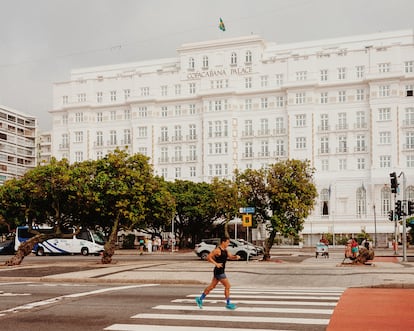
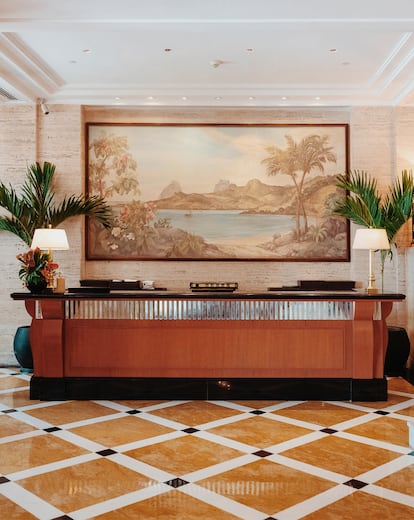
You can be drinking champagne in the legendary pool (a Brazilian bottle goes for around $40, while a French one can be as high as $1,200) or staying in a room that ranges from $500 to $7,000 a night. This year, the World Travel Awards distinguished its suites as the best in South America. And — regardless of the category of the room — every client has a careful “pillow menu” at their disposal, with options such as the “relaxing pillow with chamomile aroma” or the “aloe vera pillow with regenerative technology.” You can also ask that your bed be oriented towards the window, so you can stretch out between fresh sheets while watching the Brazilian sunrise. The famous Soviet ballet dancer Rudolf Nureyev requested this in 1971.
The pillows are convenient to wake up well rested, open the windows and see the Copacabana beach at your feet, while that atmosphere of warm, fragrant air — filled with the salty sea, the busy city and the tropics — suddenly suffocates you. You can see the immense blue expanse of the Atlantic Ocean, which is part of the public and universal Río de Janeiro, as is the golden spirit of Luiz Filipe Ribeiro. He has been working at the Copa for a decade. He started as a cleaner and has now settled into his role as a waiter, while he studies Systems Development Analysis on the side. He aims to specialize in the use of big data in luxury hospitality.
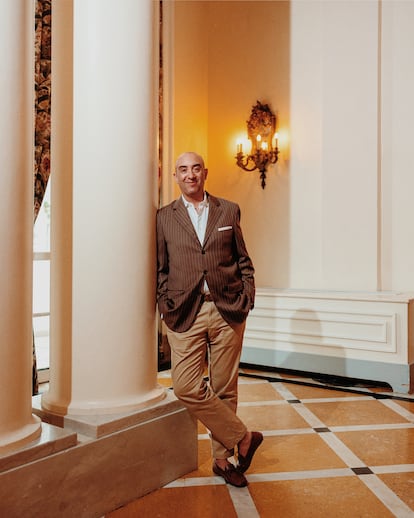
The hotel has two Michelin-starred restaurants: the pan-Asian Mee and the Italian Cipriani. Its Pérgula restaurant — located next to the pool — serves a hearty Brazilian breakfast, with honeys from various regions of the republic, sucos (juices), mamão (papaya) and melancia (watermelon). Albert II — the prince of Monaco, one of the hotel’s most distinguished and faithful guests — especially enjoys the fresh fruit.
At Pérgula, Saturdays are feijoada days, when the classic black bean stew is served. Still, the restaurant is missing some of the classic dishes of Brazilian popular culture, which don’t have a more central presence in the gastronomic variety offered by a national emblem such as Copacabana Palace. Perhaps it would be worth it if at least one of its two high-level restaurants was dedicated to the new cuisine of Brazil, a country of 3.3 million square miles whose Amazon rainforest represents — as Spanish chef Fernando Adrià said — “the last frontier of flavor.” This omission may be a trace of the initial mentality of this hotel, which looked outwards rather than inwards in its quest for glory.
In 1922 — the centenary of independence — Brazilian president Epitácio Pessoa wanted Río (then the capital) to be able to receive guests with lavish accommodations. The president brought Octávio Guinle — a hotelier and a member of one of the richest families in the country — into the project.
The building wasn’t ready in time for the centenary. Its opening was delayed until 1923, due to the size of the work and the time it took to receive so much imported material: Italian marble, lamps from Czechoslovakia, French and Swedish furniture, English carpets. Even the cement was brought from Germany. The French architect Joseph Gire designed its eclectic façade in the style of the Carlton and the Negresco, the hotels along the French Riviera that had impressed President Pessoa on his trip to Europe for the signing of the Treaty of Versailles.

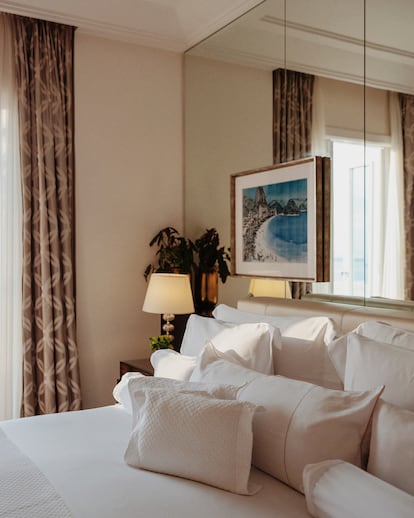
It was an exorbitant idea to build that monumental beaux arts building in Copacabana, which was just beginning to gain traction as an area for second homes and was far from the city center. Still it was ultimately a success that shaped contemporary Rio. As the journalist Maneco Müller wrote in the prologue to Boechat’s wonderful chronicle: “The old Copa is part of the history of Rio and even of its geography. After all, it wasn’t Copacabana Beach that put the hotel on the map, it was Copacabana Palace that put the beach on the map.”
The Copa soon became a reference beyond Brazil. In 1933 — with its multimillion-dollar casino up and running, only 10 years after the hotel’s inauguration — Hollywood consecrated its image worldwide with Flying Down to Rio, the musical starring Ginger Rogers, Fred Astaire and Dolores del Río.
“For me, the hotel’s period of greatest splendor was that of the golden age of travel, the era of adventure and discovery, which lasted until the first decades of the last century,” says writer Francisca Matteoli. Her favorite anecdote is from those times, when, in 1930, her Chilean grandfather arrived at the hotel loaded down with suitcases. A group of fans confused him with the actor Tyrone Power, whose arrival was expected at the same time. Matteoli’s grandfather — far from rushing to resolve the misunderstanding — stopped to sign autographs. By then, the hotel was already a machine for manufacturing literary episodes.
What happened in 1928 with Brazilian president Washington Luís was more serious. According to Boechat, he tried to force his way into the suite of Yvonette Martin, a French woman with whom he had a romantic relationship. She shot him in the abdomen. The president was hospitalized — it was publicly said that he had undergone surgery for appendicitis.

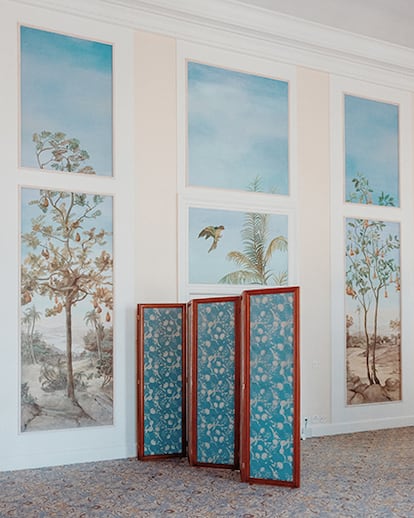
There are endless stories from the Copa. Marlene Dietrich — in the dressing room of the Golden Room, the hotel’s concert hall — once requested an ice bucket full of sand from Copacabana beach, so that she could urinate in it. Orson Welles threw furniture out of the window into the legendary pool — including his typewriter, according to some versions — after a telephone dispute with his partner, Dolores del Río. There was the fire of 1953, which Guinle weathered without losing his composure: with flames raging in part of the complex, Norwegian Princess Ragnhild’s numerous suitcases were ready in the lobby precisely at the scheduled departure time. Guinle was a perfectionist — he led a team of 1,400 employees who were attentive to every detail. His list of rules for workers established, for example, avoiding any criticism of the client, “even indirectly,” or “never — neither by word nor by gesture — revealing that you’re aware of their eccentricities.”
Today, the director is Portuguese citizen Ulisses Marreiros. He’s a calm man with cordial elegance. He began working at the age of 15, in a supermarket. Soon, he embarked on a career that took him away from his home. “My first hotel was in the south of Portugal,” he smiles. “It was a three-star hotel with 1,380 rooms, number one in the region in sales of beer and fries.”
At a table at Cipriani, he affirms — between bites of his exquisite meal and a stunning wine pairing — that “hospitality is an anthropological experience, even more so in the luxury sector.” With a subtle gesture, he calls a waiter over, to discreetly indicate that he must explain to two diners that it’s not worth asking for their champagne glasses to be filled to the brim. The price of the bottle justifies the manager’s intervention: “As you can understand, we’re not in the milkshake business here.”
Marreiros warns that the behavior of the guests is usually quite proper and that there are hardly any exceptions. In recent years, they haven’t had crises like the soccer game that Rod Stewart organized in 1977, in the presidential suite. Due to the damage caused by the singer’s game, he was — like Joplin before him — “invited to leave the hotel.”
During our visit, the Red Hot Chili Peppers were guests. Their presence was imperceptible, unlike the loud shouting that could be heard from their entourage during a brunch in the quiet Pérgula restaurant.
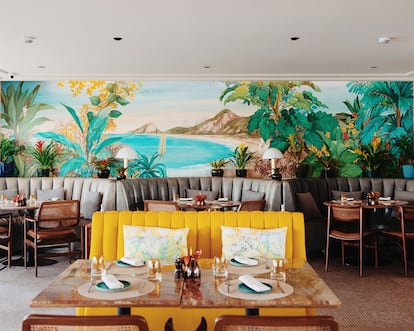
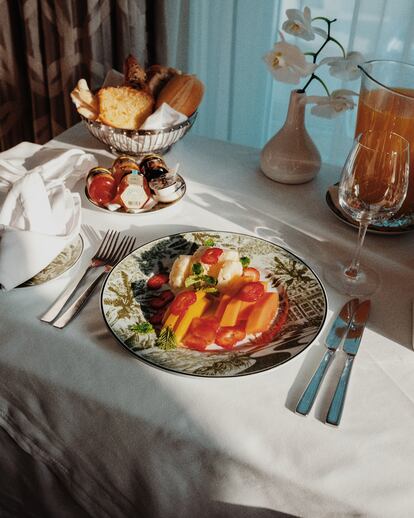
Over dinner at Cipriani, the director briefly recounts the biggest changes in the hotel’s history. Octávio Guinle died in 1968. He was succeeded by his wife — Mrs. Mariazinha — who inherited an anachronistic management model, with crazy expenses. She competed with the new five-star hotels in a Río that was declining, since — in 1960 — the capital of the country became Brasilia.
She resisted selling until 1989, when she accepted the offer made by James Sherwood, who integrated the Copacabana into Belmond (formerly Orient-Express Hotels). In 2018, this group was acquired by the luxury giant LVMH, owner of what is now formally called: Copacabana Palace, A Belmond Hotel, Rio de Janeiro.
Since Sherwood got to work three decades ago, renovations haven’t stopped. The most recent stage was the reopening of the theater, in 2022. It had been closed for 27 years and was rehabilitated by the architect Ivan Rezende. “Everything had been lost after the fire of 1953… we had to do archeological work to interpret what it had been like,” he explains. The result is a cubic space of native woods, with surface reliefs that help improve the reflection and absorption of sound. Once the renovation was finished, the famous Brazilian composer Caetano Veloso stopped by for an interview. Impressed by the acoustics, the legend lamented not having his instrument with him: “How can they bring me here without my guitar?”
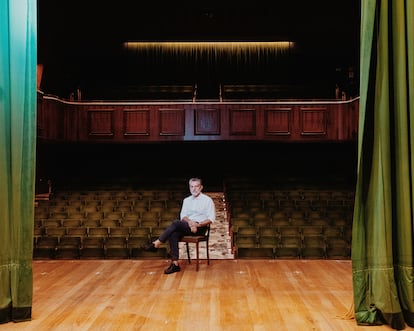
The Copa has evolved while maintaining its essence. It’s a luxury hotel updated to the standards of the 21st century, while still being inhabited by ghosts. There are formidable specters, such as Jorginho Guinle, the nephew of Octávio — a playboy who served as a bridge between Brazil and the stars of the United States and Europe. He squandered his time away in the hotel, where he lived. One day, in 2004 — while dying in the hospital — old Jorginho gave the order to be transferred, as quickly as possible, to suite 153 at Copacabana Palace. Once there, he ordered a vanilla milkshake with caramel and had chicken stroganoff for dinner. For dessert, he had a raspberry sorbet. He died at dawn, satisfied, broke and golden, like the soul of Río.
Sign up for our weekly newsletter to get more English-language news coverage from EL PAÍS USA Edition
Tu suscripción se está usando en otro dispositivo
¿Quieres añadir otro usuario a tu suscripción?
Si continúas leyendo en este dispositivo, no se podrá leer en el otro.
FlechaTu suscripción se está usando en otro dispositivo y solo puedes acceder a EL PAÍS desde un dispositivo a la vez.
Si quieres compartir tu cuenta, cambia tu suscripción a la modalidad Premium, así podrás añadir otro usuario. Cada uno accederá con su propia cuenta de email, lo que os permitirá personalizar vuestra experiencia en EL PAÍS.
¿Tienes una suscripción de empresa? Accede aquí para contratar más cuentas.
En el caso de no saber quién está usando tu cuenta, te recomendamos cambiar tu contraseña aquí.
Si decides continuar compartiendo tu cuenta, este mensaje se mostrará en tu dispositivo y en el de la otra persona que está usando tu cuenta de forma indefinida, afectando a tu experiencia de lectura. Puedes consultar aquí los términos y condiciones de la suscripción digital.
More information
Archived In
Últimas noticias
Welcome to the post-religion era: The idea of Christianity as the absolute truth has become obsolete
‘I thought you would like it’: The risky sexual practice popularized by TV shows and TikTok
The digitalization of tourism: ‘They promise experiences and gave us the worst possible one’
Mexican peso defies uncertainty with forecasts of a new period of stability in 2026
Most viewed
- Sinaloa Cartel war is taking its toll on Los Chapitos
- Oona Chaplin: ‘I told James Cameron that I was living in a treehouse and starting a permaculture project with a friend’
- Reinhard Genzel, Nobel laureate in physics: ‘One-minute videos will never give you the truth’
- Why the price of coffee has skyrocketed: from Brazilian plantations to specialty coffee houses
- Silver prices are going crazy: This is what’s fueling the rally

